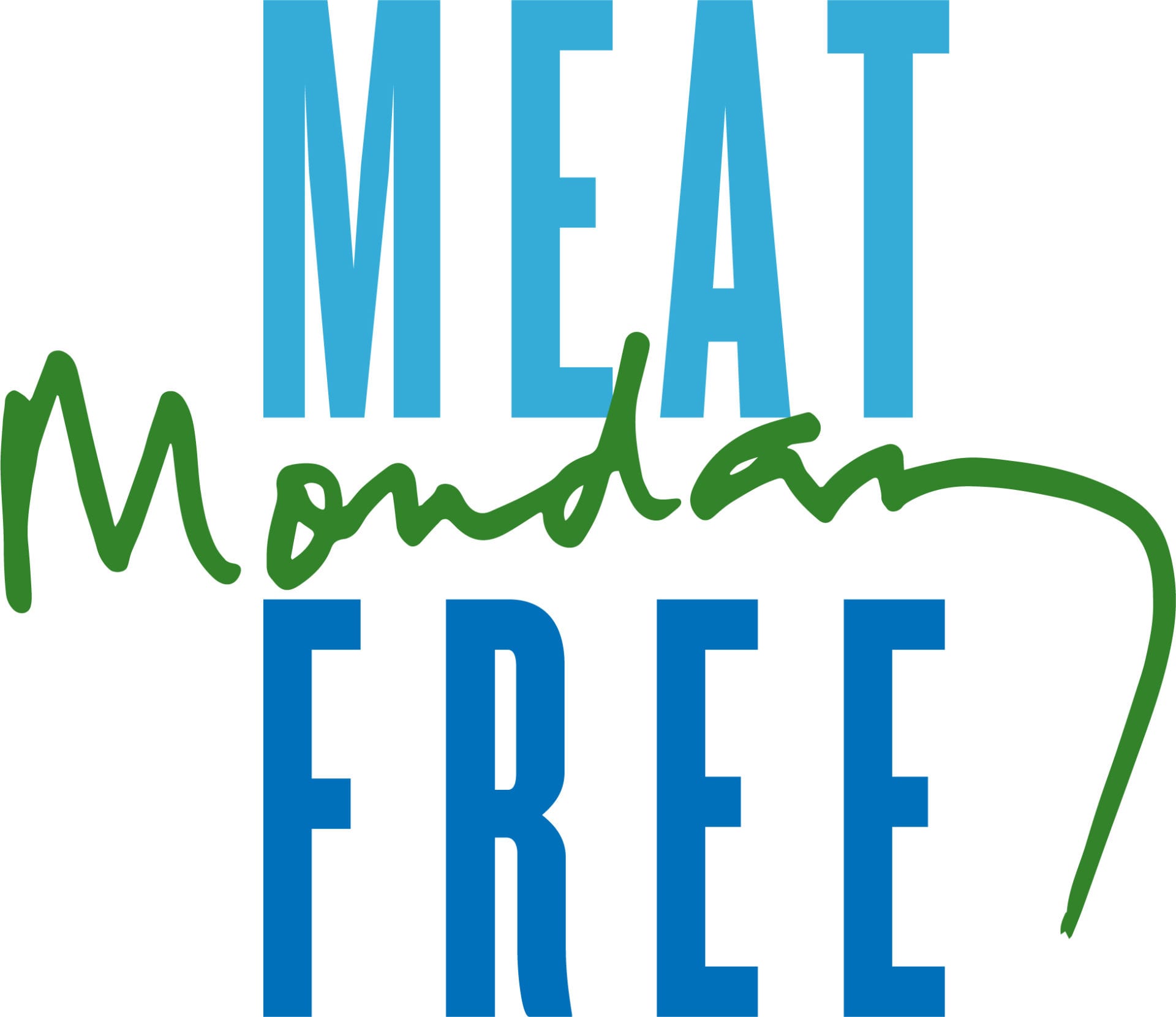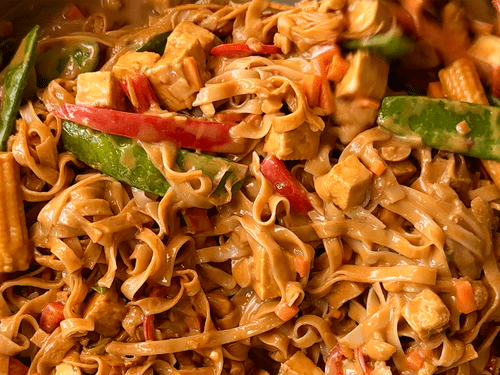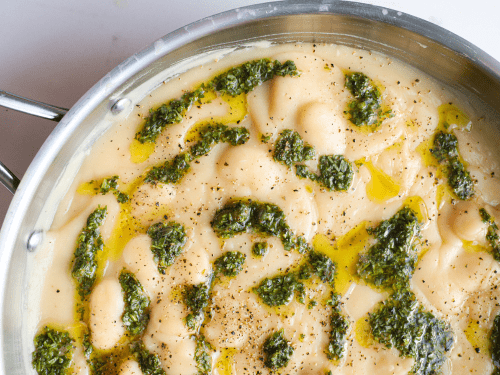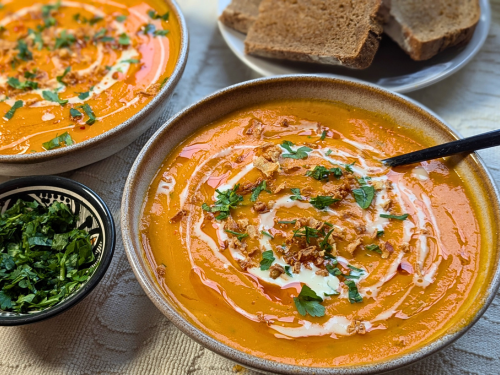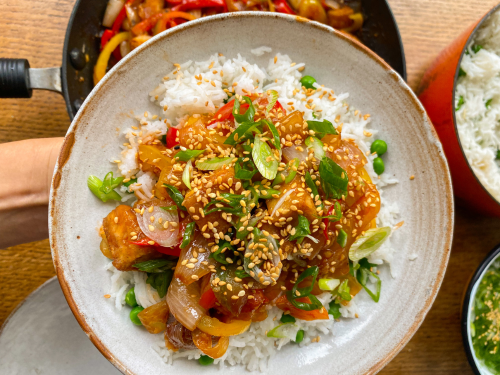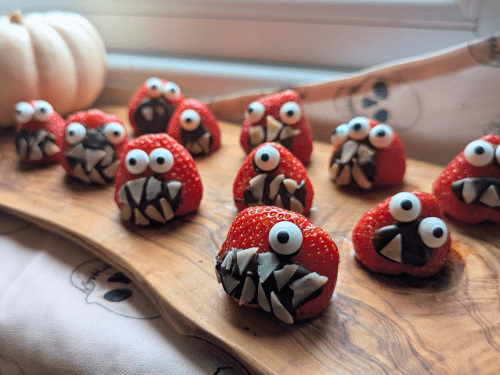Fava Bean Family Pasta
Share the love
- Serves: 3 adults/2 adults and 2 children
- Preparation: 10
- Cooking: 15
- Ready: 25

A simple recipe, perfect for the whole family, which provides colour, texture and plenty of fibre.
Ingredients
- 250 g fava bean pasta (e.g. Explore Cuisine Fava Bean Fusilli)
- 2 tablespoons oil (e.g. olive oil)
- 3-4 cloves garlic, sliced (option to swap for 1 heaped teaspoon garlic paste)
- 350 g cherry tomatoes (option to use larger tomatoes chopped up)
- 200 g rainbow Swiss Chard, stems and leaves finely chopped (keep the leaves and stems separate)
- squeeze of lemon
- optional vegan cheese topping (e.g. grated cheddar/parmesan or nutritional yeast)
Method
Cook the pasta in boiling water for 7 minutes (cook as per pack instructions).
Meanwhile, add the oil and garlic to a pan and cook for a 2 minutes, until fragrant but not browned.
Add the cherry tomatoes whole and the chopped Swiss chard stems. Cook for 5 minutes before adding the leaves (option to add in earlier if cooking for young babies so it goes very soft) and cook for another 5 minutes or so, until the leaves have wilted down well. Season with pepper to taste.
Once the pasta is cooked, drain reserving a little cooking water. Stir through the cooked vegetables (option to remove skin from tomatoes for babies once cooked as they should peel off very easily). Add a little pasta water if needed to help create a sauce for the pasta.
Serve with a large squeeze of lemon and optional vegan cheese or nutritional yeast sprinkled on top.
Recipe notes
- Rainbow swiss chard adds bright colours to this dish, making it visually appealing. However, you can use normal Swiss chard, or different coloured tomatoes to add extra colours.
- Option to cook chard leaves separately and then blend with a little pasta water for a very young baby. This would make a greener sauce for the pasta.
- You can also chop the chard really finely for younger kids or leave it chunkier for older ages.
- Swiss chard and tomatoes are both in season at the moment (Swiss chard and garlic used for this recipe were both from a friend’s allotment and the tomatoes were from our garden!). Optional seasonal swaps include spinach (late spring – late autumn), kale/cavolo nero (winter – spring), courgette (late spring – early autumn), sprouting broccoli (spring), shredded Brussel Sprouts (winter), fresh peas (late spring/early summer) [boil peas with pasta].
Nutrition per serving (without optional toppings)
417 kcal
11 g fat of which 1.8 g saturated
49 g carbohydrates of which 6.2 g sugars
11 g fibre
24 g protein
0.39 g salt
1.4 mg iron (not including pasta)
Additional notes
Recipe courtesy of Charlotte Stirling-Reed and Explore Cuisine.
Charlotte Stirling-Reed is “The Baby & Child Nutritionist” and is a Registered Nutritionist with the Association for Nutrition. Charlotte is also an author and mum to little foodies Raffy and Adaline, and owner of consultancy, SR Nutrition.
Explore Cuisine makes delicious pastas from ingredients like lentils, chickpeas and edamame – all naturally high in protein and fibre and lower in carbs. Having invented “a smarter way to pasta” with the biggest variety of plant-based organic ingredients, Explore Cuisine is all about exploring new tastes so they can take customers on a powerful adventure.
“This recipe is so simple, it’s perfect for the whole family and adds colour, texture and plenty of fibre into your diets. I love using these pasta alternatives made using fava beans which belong to the protein food group and offer extra variety of tastes, flavours and nutrients.
It really doesn’t take long to put this one together either, around 10 minutes and it’s all just the chopping of the colourful chard that takes a little time. You can add less garlic if you want to, but it really works well and it’s good to expose kids to a variety of flavours too. See below for extra adaptations that you might want to try.”
